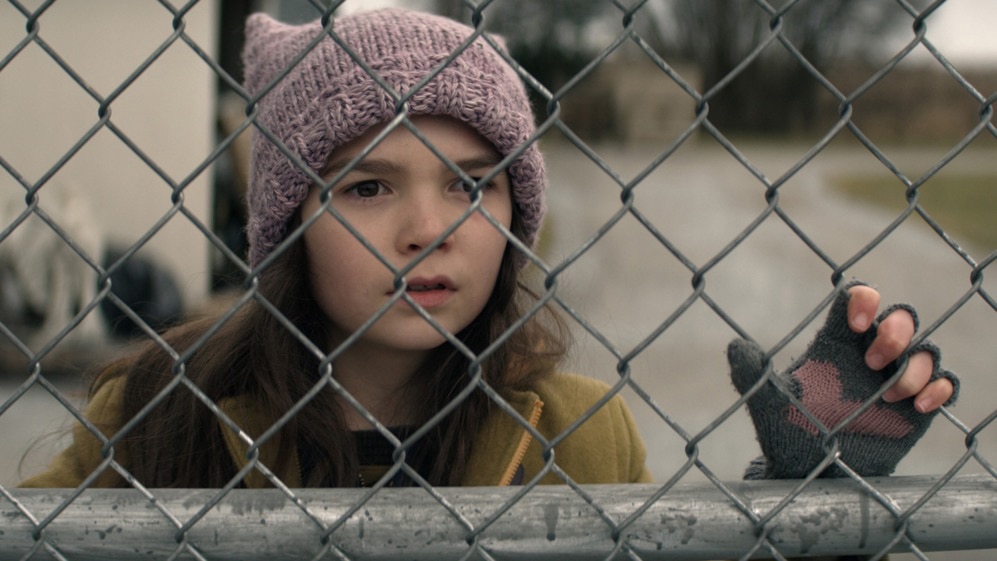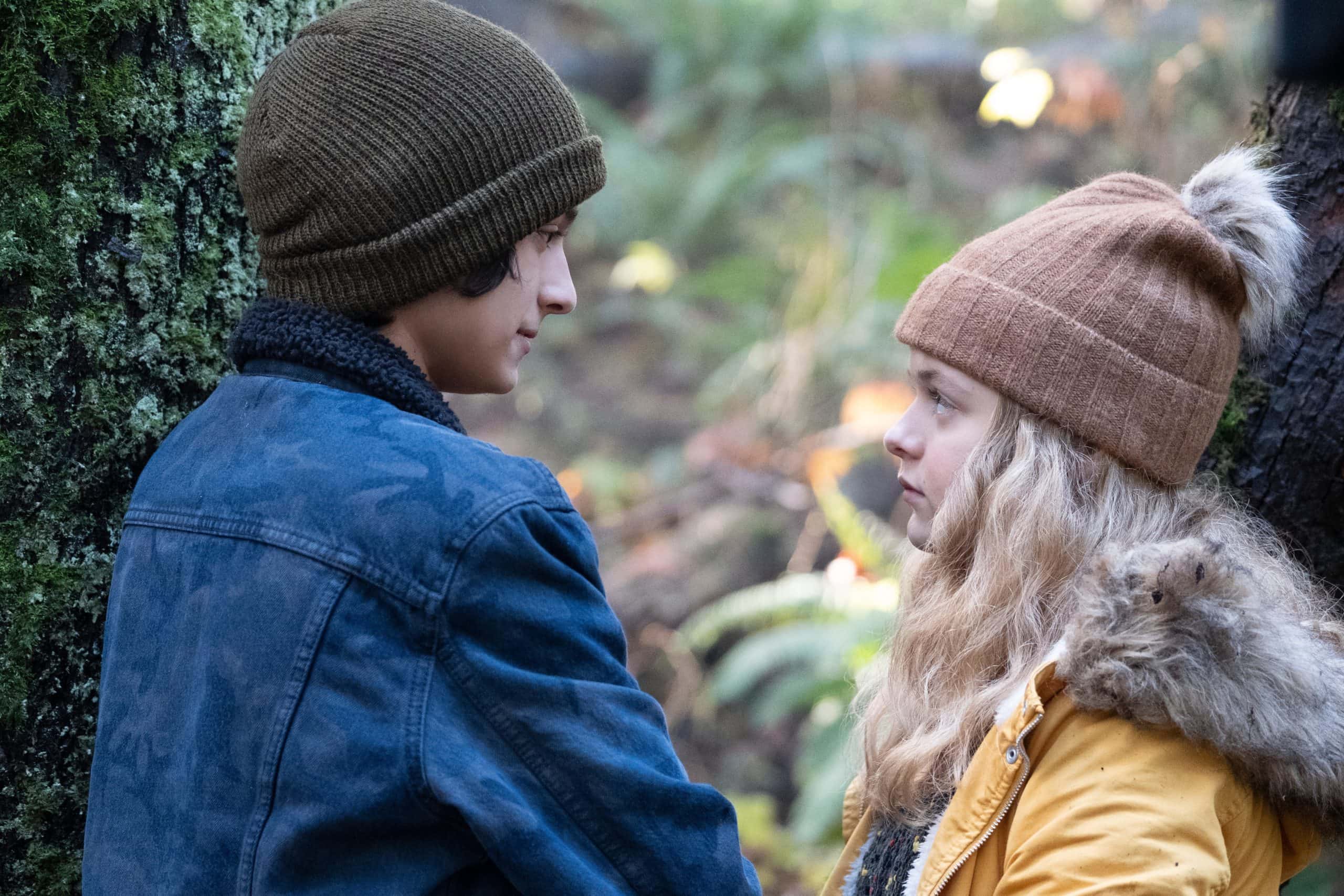True-ish crime show Home Before Dark, about an intrepid cub reporter who’s always late to class, is the latest Apple TV+ streaming option available to quarantined Americans. Is it any good?
Here’s a quick guide to the pleasures of the show.
Home Before Dark: Bad news first
In its first 10-episode season, Home Before Dark never quite reconciles its central conflict. No, not the crime that precocious reporter Hilde Lisko (played by Brooklynn Prince) spends the inaugural season investigating. It’s that her father, Matthew (Jim Sturgess), is so completely irresponsible — and the show never decides whether that’s a good thing or not.
The TV-14 show, created by Dana Fox and Dara Resnik, takes place in a moral gray area. Home Before Dark can never get around to passing judgment or valorizing the way the Lisko family lives. It’s unclear whether Matthew — an alcoholic, overgrown child with an anger-management problem and a penchant for hitting cops — is supposed to be someone Hilde is right to look up to.
The show suffers from these writing problems throughout, relying too much on true-crime and teen-movie cliche to get it from point A to point B. But there’s still enough in the pro column to recommend the hopeful hit.
1) Brooklyn Prince

Photo: Apple TV+
Prince will be familiar to anyone who watched the kitchen-sink drama The Florida Project in 2017. In that indie hit, she also played the child of a deadbeat, though that film judged her parent harshly. Here, Prince portrays a fiercely independent kiddie journalist whose favorite movie is All the President’s Men. She stumbles onto a huge case that leads right to the very top of the leadership of her father’s hometown. Along the way, everyone from her father to the chief of police becomes a suspect in a criminal conspiracy involving a kidnapping and a cover-up.
Prince does good work with the preternatural investigative stuff, but it’s the moments where we remember that she’s a little kid that showcase her astonishing talent. Midway through the season, after she witnesses an unjust arrest she worked hard to stop, we see her break down in tears. It’s a reminder the show perhaps too often needs: This is still a show about a little kid — and life is hard on them.
2) The Jim Sturgess enigma
Sturgess is an actor who’s essentially been giving tiny variations on the same performance his entire career, and that performance is: guy faking it as an adult. He’s good at it, too; perpetually damp, never touched a comb, voice always about to crack, handsome in a suspended-adolescent kind of way. He’s who directors call when there’s a part for a star and no star to call.
Sturgess here is almost accidentally investigated by the show because his character has a wife and three children and still seems like he was made big overnight by a Zoltar machine.
Fascinatingly, Home Before Dark keeps giving him opportunities to prove he’s an adult after all, but he keeps failing them. The most interesting scene (again, by accident) in the whole series might be a moment early on when his 9-year-old daughter tells him she’s going to leave the house to investigate a murder and he can’t stop her. His authority fundamentally means nothing to the little girl to whom he taught everything she knows about the world.
In fact, Sturgess’ bizarre abdication of his parental responsibility gives the scenes in the Lisko home their warmth. Watching the three little girls raise themselves is an endearing spectacle. It makes spending time in the show’s world more interesting and detailed.
3) Michael Greyeyes
An important B-storyline in the first season of Home After Dark centers on a man who’s been sitting in jail, innocent of the crimes with which he’s been charged. The man in question is Sam Gillis, played by First Nation actor Michael Greyeyes (he is of Nêhiyaw/Plains Cree descent). Greyeyes is an important fixture of film and theater, and this show gives him a number of haunting scenes that allow him to showcase his rare talent.
He becomes the barometer for Hilde’s involvement in the case. Seeing him become the very real scapegoat for a corrupt police department has the unmistakable sting of the real about it. His performance is terrific. And Hilde’s concern about the character, and her immediate trust in and respect for him, means they have skin in the game beyond abstract ideas of justice.
4) Animated history
Despite direction from the usually agreeably showy Jon M. Chu, Home Before Dark doesn’t show a huge amount of noticeable visual style. It does offer a couple of concessions to heightened reality, including some jaw-dropping animated set-pieces that re-create crucial pieces of history relevant to the cases Hilde works.
The animation combines crude, chalk-drawn lines and gorgeously handcrafted paper puppets moved by computers. Together, they bring a sense of fun and cool to the somber saga of missing children and corrupt adults.
5) Realistic teen emotions

Photo: Apple TV+
The show wisely spreads its narrative concerns around the entire Lisko family. That includes the believably frustrated courtship between eldest daughter Izzy (Kylie Rogers), and her on-again-off-again crush, Ethan (Rio Mangini). Izzy is first drawn to Ethan when the popular kids reject her and his affection is the only place for her to run toward. Then the writers keep designing situations that call for her to question whether she likes him or just likes that he likes her.
The show falls back a little too much on the usual beats that teen-and-kid stories use in modern storytelling. However, the constant flux of their relationship feels very real and very specific to these two performers doing these two characters. Even their final moment in the first season feels like the kind of overblown and earnest thing kids say to each other. It’s a nice reminder that even as Hilde’s saving the world one story at a time, other kids are just trying to hold hands. And that’s important, too.
Watch on: Apple TV+ (subscription required)
Scout Tafoya is a film and TV critic, director and creator of the long-running video essay series The Unloved for RogerEbert.com. He has written for The Village Voice, Film Comment, The Los Angeles Review of Books and Nylon Magazine. He is the director of 25 feature films, and the author of more than 300 video essays, which can be found at Patreon.com/honorszombie.
![5 reasons to watch Home Before Dark [Review] Home Before Dark](https://www.cultofmac.com/wp-content/uploads/2020/04/Apple_TV_Home_Before_Dark_key_art_16_9-1536x864.jpg)

